

Home
Research Interests
CV & Publications
Teaching
Lab Members
Field Research
Research in the News
Prospective Students
Prospective Field Assistants
Links
Horse Corral, Field Season 2007 |
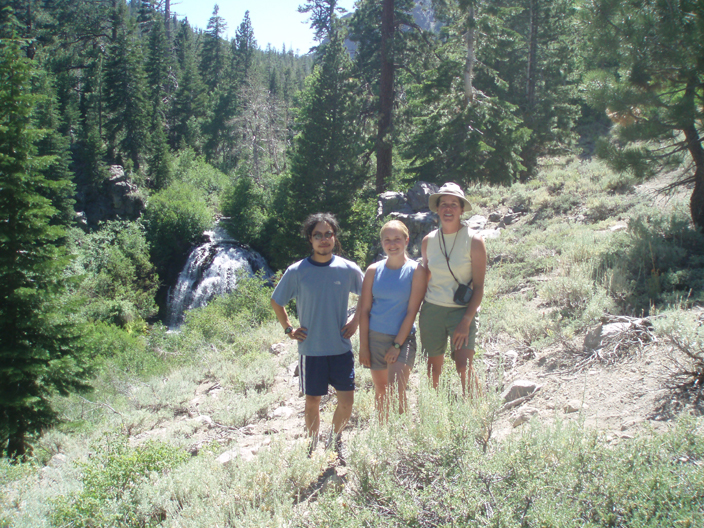 |
| This year's field assistants: Mike Kong and Samantha Swisher (that's me on the right). We're at the waterfall on the Valentine Reserve, part of the Valentine Eastern Sierra Reserve run by the University of California Natural Reserve System. |
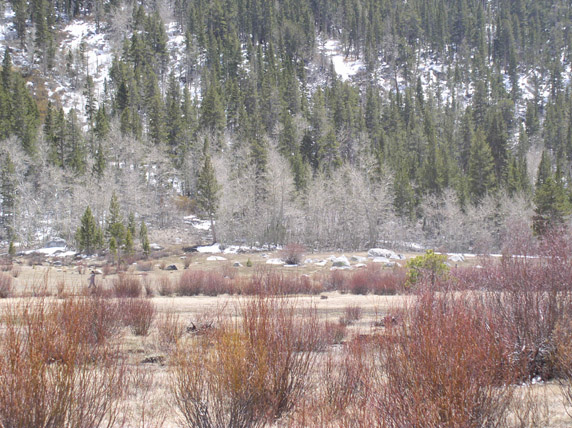 |
A very low snowfall year in the area, unlike last year. Horse Corral had almost no snow when we arrived in late April. This made it easy to follow the squirrels - no snowshoes required!! But, the low water content can spell disaster later in the season, when the food disappears before juveniles have deposited enough body fat to survive the winter. |
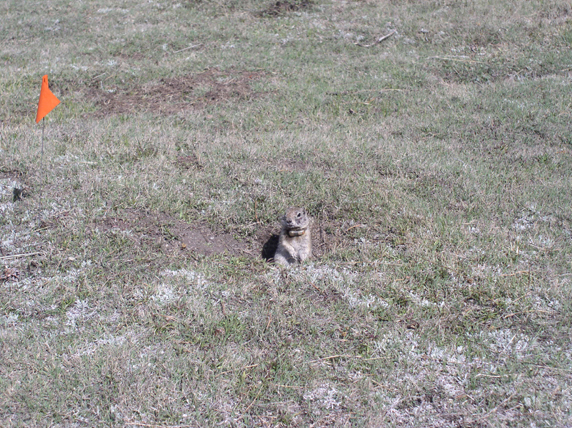 |
| Our Super Stud from previous summers, "Beard" is back again! Much to my surprise, since when we left last summer, he was only 310 grams, whereas the other males were around 500 grams. He played the mating game again, which is why he's sporting a radiocollar in this photo, but boy, did he lose his mojo. For the first time, he lost fights with other males, and the ladies weren't that interested in him. When he did acquire a mating, he was usually the third or fourth male to mate with her. Reproductive senescence in a 6 year old? |
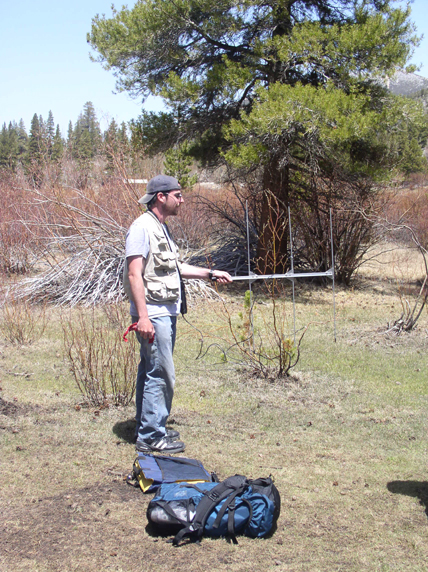 |
| To keep tabs on our adult males, who travel far and wide to find sexually receptive females, we radio track male squirrels which have radiocollars on (see the previous photo of Beard). Here Jason Bruck sets out to find a collared male. |
 |
| Kara Nuss, Andy Dosmann (who, with Jason Bruck, helped out - wonderfully - during the busy mating season) and Mike at base camp. This is where we "process" animals - collect body weights, DNA samples, and fecal samples, read or insert PIT tags, attach radio collars, inspect reproductive condition, and apply hair dye in unique symbols for identification from a distance. |
Here's a squirrel with a fresh dyemark - "UC", of course, for "University of Chicago"! |
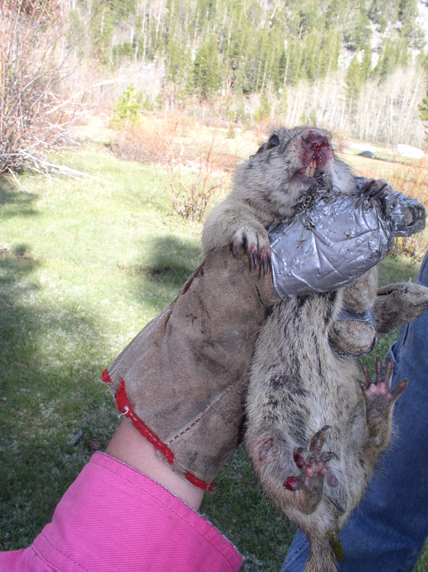 |
Ah, the costs of mating. This male has a bloody nose as well as bloody toes. Note the fecal matter, which we collect for non-invasive measurement of hormones such as testosterone, progesterone, estradiol and cortisol, which have all been validated in my lab. |
We have been investigating the role of relatedness in juvenile social interactions, so each of the > 150 juveniles which emerge each summer gets a unique dyemark as well. We also collect fecal and DNA samples from them. |
| One day our social-interaction data were interrupted by constant alarm calls from adults. Finally we discovered what was bothering them - this weasel who was trying to catch a nap on the branch of this pine tree. |
 |
| Charlie Norton, vacationer and ground-squirrel scientist in training, observes juveniles from one of our deerstands. |
This mom had a litter of 6 kids. We are currently working on the DNA samples in the lab, to find out who their Dads are! |
The end of another season. Here's "Head 1", one of our studs. He weighed in at just about 500 grams when we left at the end of July. Quite chubby, and quite difficult to get our fingers around! But this body fat is critical for their overwinter survival, as squirrels do not store food in their hibernacula, and once they arouse from torpor, they can go weeks without eating.
That is, if they do not starve to death during the winter. Let's hope Head 1 continued to lay on the grams!
|
